Boise’s population of around 300,000 and its role as the capital of the state make the city comparable in some respects to Tallahassee, Florida, our home-state capital. But unlike Tallahassee, which is a relatively small town in a state with multiple major metropolitan areas, Boise is also the largest city in the state by a long stretch. After a month-long drought of “civilization” we were ready to embrace all that the city could offer, and driving into Boise we were immediately made comfortable by miles and miles of newly-constructed planned communities and strip malls filled with familiar national chain stores.
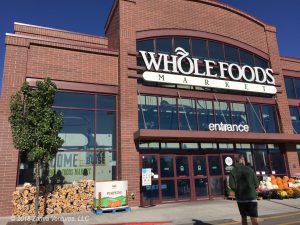
Part of the reason for our stay in Boise was that I was scheduled to travel back east to attend meetings for a volunteer board at my university in North Carolina (Go Deacs!), so I needed to be near an airport. But we also planned to take advantage of all the shopping and services that an urban area can offer. The most significant of these was a reunion with a long-lost friend: Boise is home to the first Whole Foods that we have seen since Omaha. Visiting Whole Foods was like coming home into the warm embrace of amazing cheese.
But Whole Foods was not the whole story! Our time in Boise included haircuts (both of us, with both Supercuts and GreatClips to choose from), flu shot (me), several trips to WalMart and Home Depot (Ken, while I was gone), and a Costco stock-up visit (Ken again). Ken even managed to wash both the truck and our Airstream, which was long overdue. We leave Boise fully stocked and ready to take on the next leg of the journey.
We were parked for a week at a private park in a suburban environment. We typically stay in public campgrounds (in national, state, county, or municipal parks) where we are often among the largest and most luxurious rigs. Our trailer certainly feels enormous when we are trying to back into a tight space in a national park campground, while a Prius-driving tent camper watches from the site next door! Our few stays in private RV “resorts” have given us a completely different perspective on our rank within the RV world. In the community of private parks, we are runts. All our neighbors in Boise outclassed us in terms of length, height, and width, and undoubtedly weight. Our visits to private parks are relatively rare, since they often resemble parking lots, but private parks typically make the most sense (i.e., they are the only choice) in urbanized areas. It was interesting to spend a week observing the neighbors in Boise, who obviously have a completely different style of travel from us.
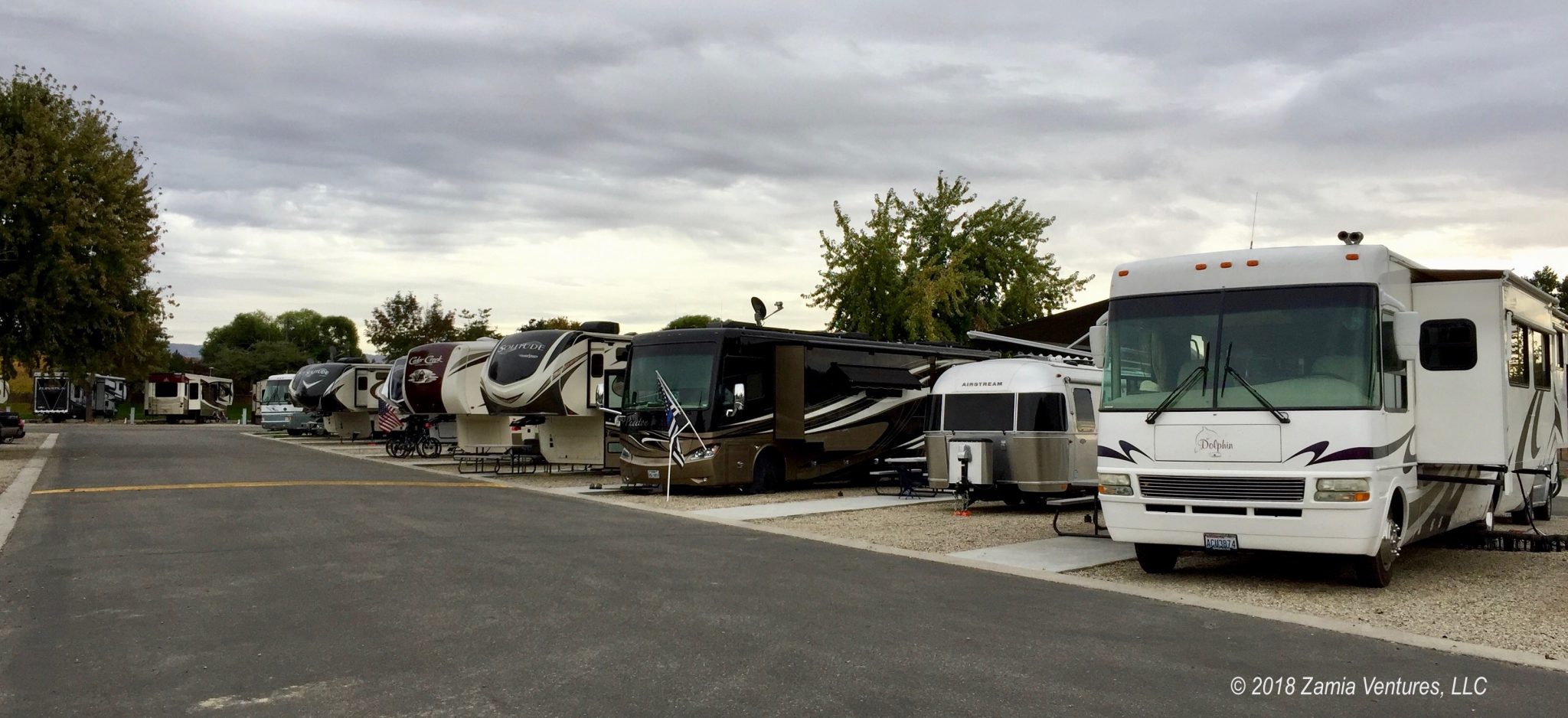
Idaho Botanical Garden
Thanks to my 4-day sojourn on the east coast, and our long list of chores, our sightseeing opportunities in Boise were somewhat limited. It should come as no surprise that one destination that made onto the agenda was a visit to the Idaho Botanical Garden. Located adjacent to the historic Idaho Penitentiary, the garden reminds me somewhat of our home garden in Palm Beach County. Like the Mounts, the IBG is a fairly small affair, and it is arranged around themes. So instead of having a section filled with 3,500 varieties of day lilies, each meticulously tagged, IBG has a Meditation Garden, an English Garden, a Vegetable Garden, etc. The garden also featured plenty of interesting metal sculptures placed throughout the property.
The most elaborate garden is the Lewis & Clark Garden (of course), which also doubles as “Idaho Native Plants” since it features the species that the Corps of Discovery encountered on their travels through Idaho. The garden is located along the side of a hill, with different elevations used to present different types / elevations of ecosystems, all tied together with informative signage about the food, medicinal, and cultural uses of different plants.
My other favorite area was the Fire Wise Garden, which focused on landscaping options that could help minimize fire risk to structures. Since quite a few native plants are highly resinous and will burn long and hot, this garden helps landscapers make choices that are water-efficient yet not prone to fire. There were also examples of how to prune up natives like sagebrush to minimize their fire prone tendencies. Having seen prolific wildfires in the news during our visit to the Northern Plains and Rockies — fortunately we rarely encountered fire or smoke firsthand — we have a new appreciation for fire in the landscape.
Birds of Prey Sanctuary
The other spot I didn’t want to miss in Boise is the World Center for Birds of Prey, operated by The Peregrine Fund. This worthy organization has been around for almost 50 years and began with the single goal of saving the Peregrine Falcon from extinction. At the time, the once-common species had lost so much ground that it was extinct east of the Mississippi. The species was hit hard by the use of DDT as a pesticide, which collected in the bodies of the birds and reduced their calcium levels, leading to fragile eggs that couldn’t survive. Once DDT was banned, the Peregrine Fund began an intensive program of captive breeding to release new animals into the wild. After breeding and releasing thousands of falcons, the organization’s dedication was rewarded when the Peregrine Falcon was removed from the U.S. Endangered Species List in 1999.
The Peregrine Fund then moved on to focus on the recovery of other birds of prey, including well-known species like the California Condor and little-known success stories like the Mauritius Kestrel, which had been reduced to only four remaining individuals in the 1970s. The Boise facility hosts the world’s largest captive population of California Condors, for breeding and release purposes, and is actively engaged in hands-on research and education throughout the world.
The category of “birds of prey” is not a taxonomic one — owls, hawks, falcons, and vultures are not particularly closely related. Instead, birds of prey are categorized by their physical characteristics (strong talons, curved beaks, excellent bifocal eyesight) and outstanding hunting skills. This means that the residents of the World Center for Birds of Prey come in many different shapes and sizes, which makes for an interesting visit.
The bird breeding areas are not open to the public for viewing. Rather, the section that is open to the public has several different types of rescued birds living in a zoo-like environment for education purposes, along with an impressive modern visitor center. We had hoped to see the free flight show that showcases the skills of the resident birds, but it was cancelled on the day of our visit because of high winds. Instead, we attended indoor live bird shows with informative presenters, and also took a tour of the center’s extensive archive and museum on the history of falconry (hunting with birds of prey) around the world.
We’re certainly glad we had the opportunity to see some of the highlights of Boise, despite being a little short on time. Next up: we head back into the wilderness, this time in sparsely populated eastern Oregon, in search of fossils and more outstanding scenery.
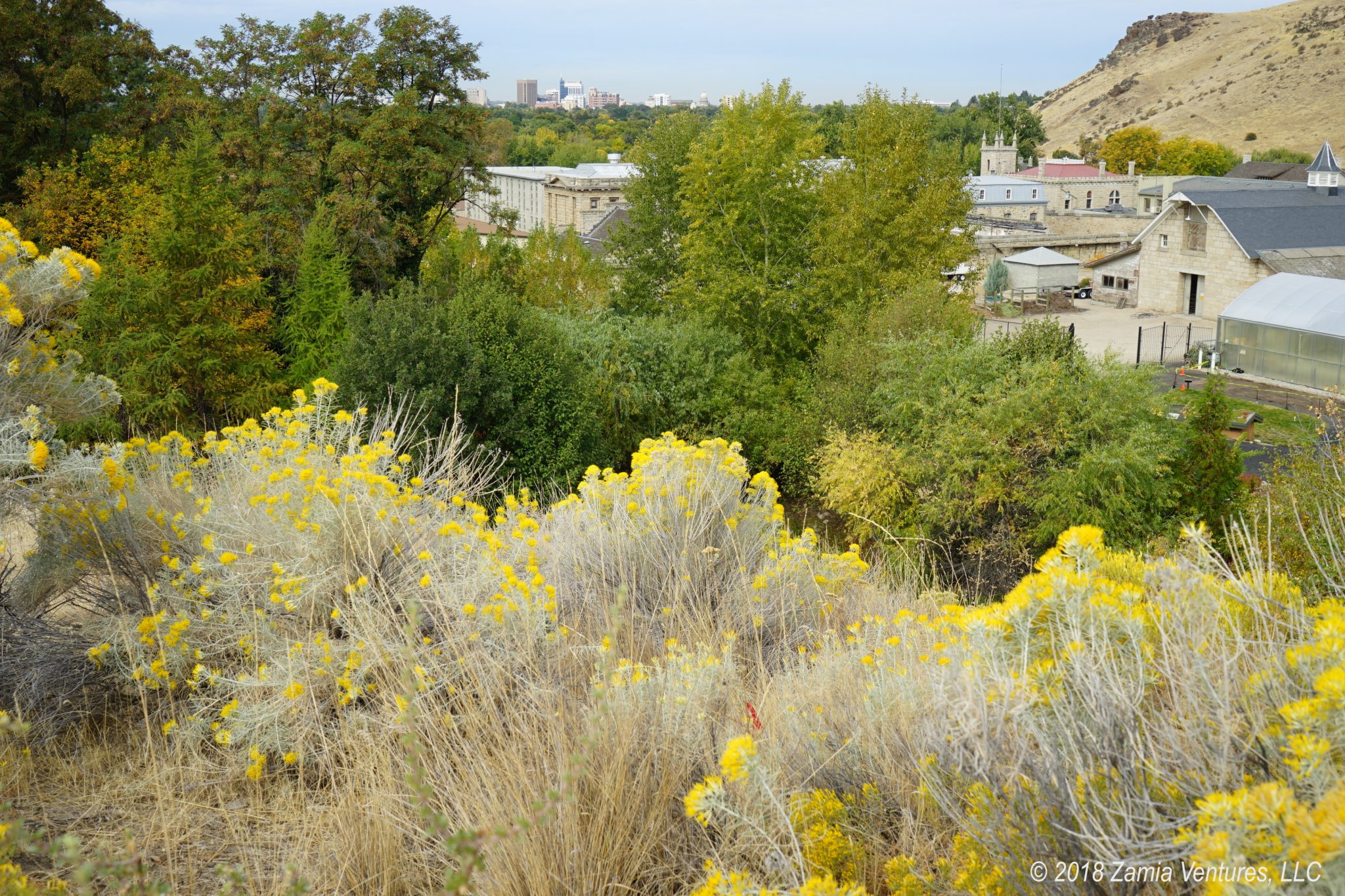
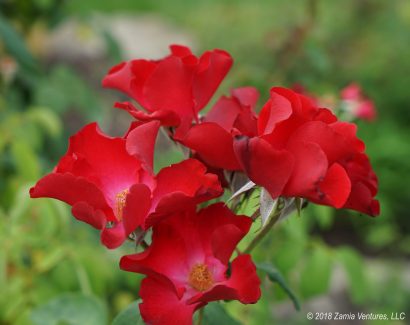
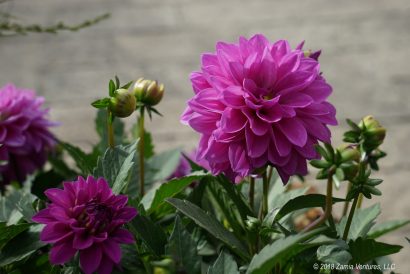
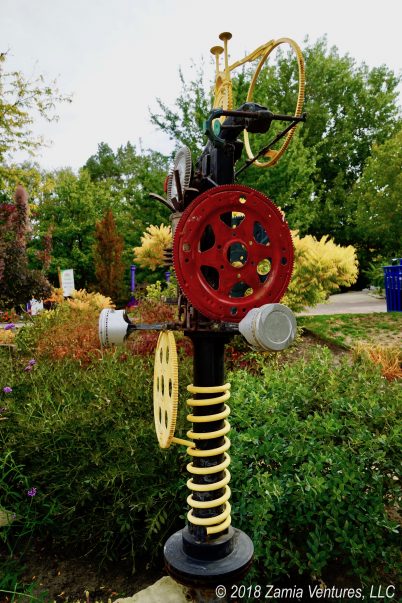
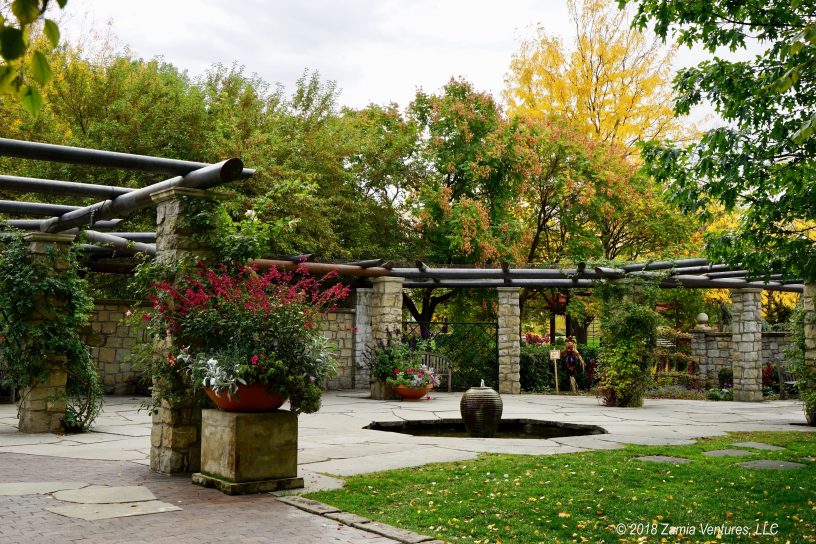
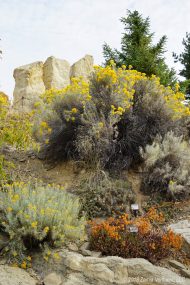
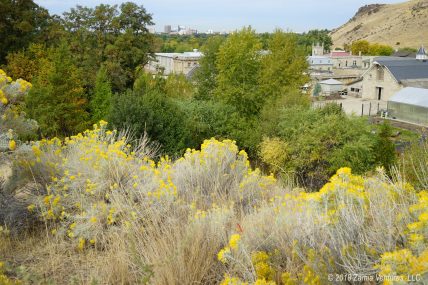
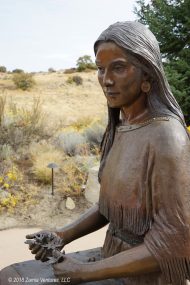
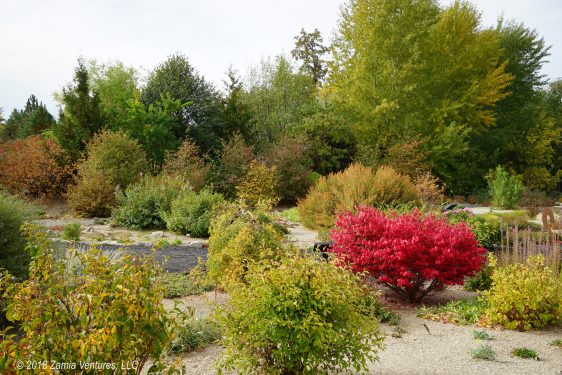
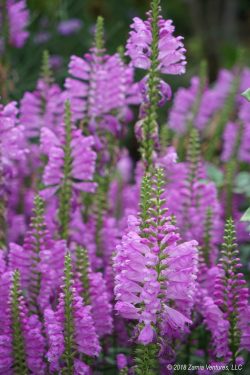
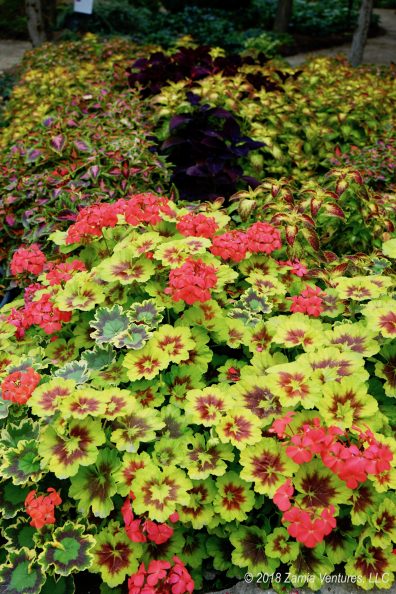
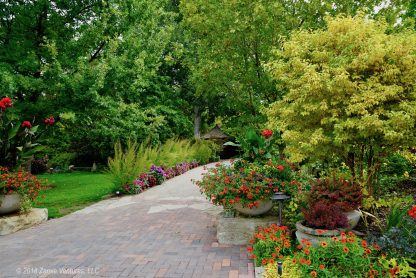
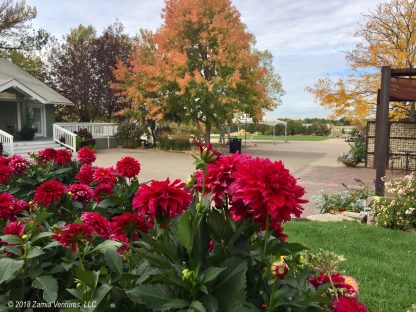
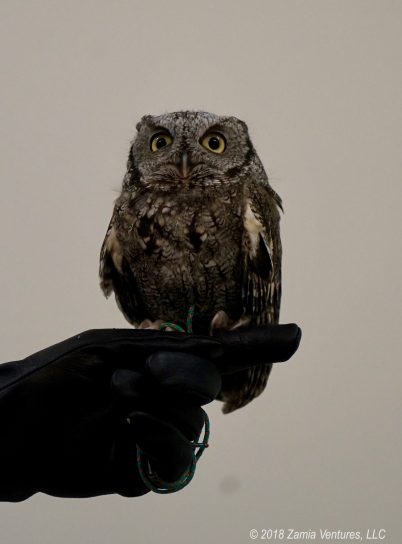
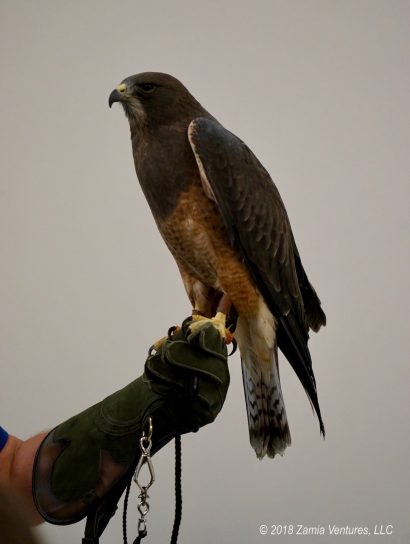
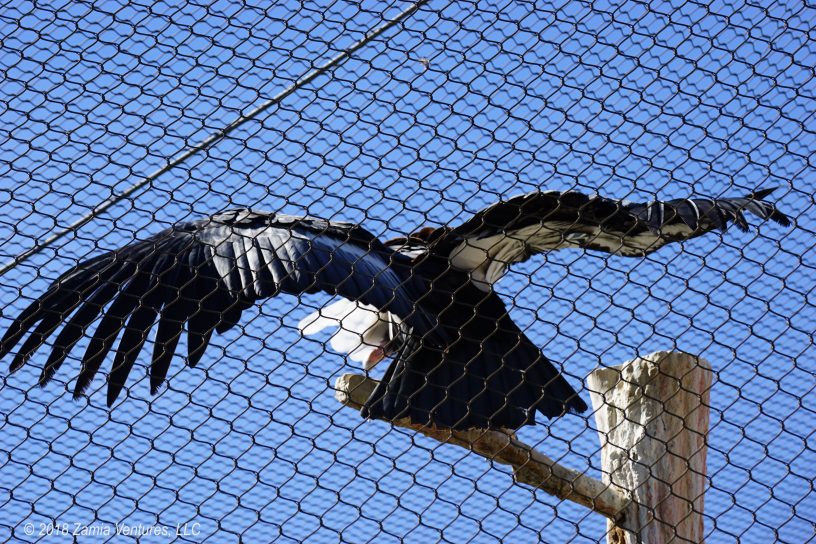
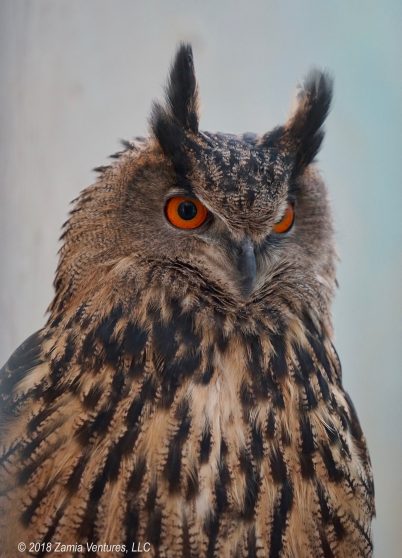
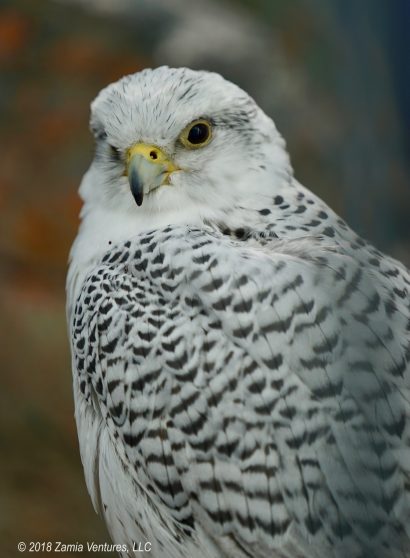
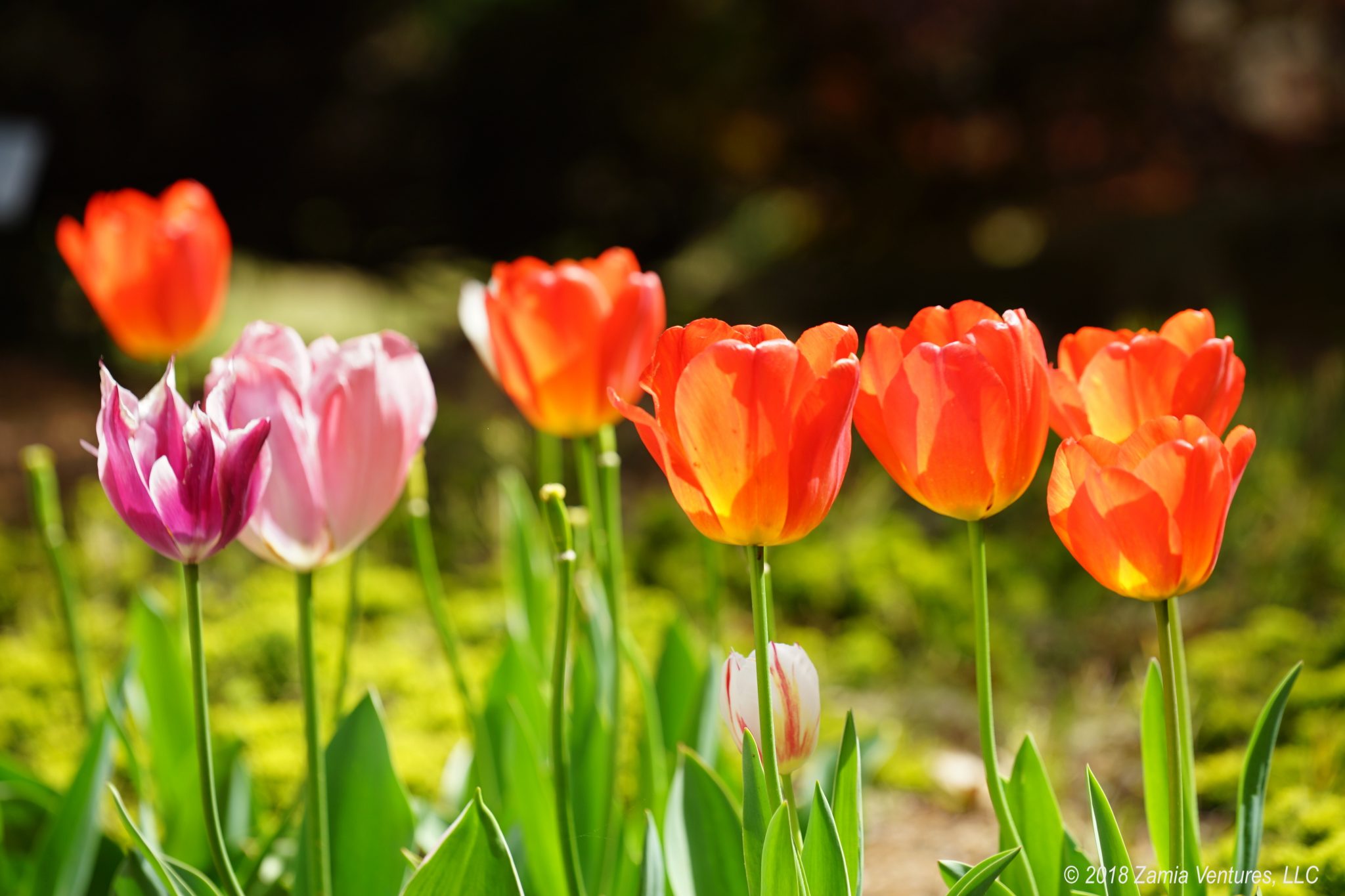
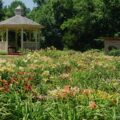
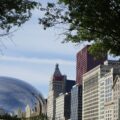
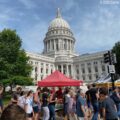
The so called “RV resort” looks extremely boring compared to the lovely spots in natural environments you spent time in. Can’t see we’re it would be very enchanting to spend your travels in these places that look much like parking lots.
To be fair, the RV resort did have a nice pool and hot tub, a large dog run, cable TV at every site, a large laundry facility, and the nicest showers we have seen in a while. The whole place was extremely clean and well-managed, and we thought the price was more than fair. There’s a time and place for every sort of RV park!
“The warm embrace of amazing cheese.” You are a poet, my friend. 🙂
The more we’ve traveled, the more we’ve found that it is so important to balance where we stay – both in terms of nature vs. city and private parks vs government parks (we’re almost always “too fat” for the national parks.) But there really is an art to travel planning and we are getting better as we go. A couple weeks in the middle of nowhere, then a couple weeks in “civilization.” A couple weeks in the desert followed by a couple weeks in the trees. A couple weeks inland, then a couple on the coast. Too much of anything becomes boring/frustrating to us. Which, of course, begs the question: where the hell are we gonna settle down????
We also like to balance the government parks with the private, if for no other reason than full hook ups are dreamy after a couple weeks with the limited ones. We hate the parking lots too, but sometimes a real 10 minute hot shower in the comfort of my own home followed by hours of glorious internet browsing is enough to balance out my disdain for the neighbors and their satellite dish.
Anyway, glad you got your Whole Foods and other markers-of-civilization fixes while in town. It was too hot for us to visit the gardens or bird sanctuary while we were there, so thanks for the tour.
We could not stay at private parks all the time — it’s just too annoying to keep the shades down all the time — but they definitely have a place in the mix for us. Long showers, cable TV, and endless power are just some of the things we appreciate after going without!